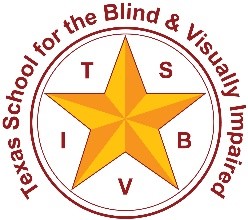Positive Behavioral Interventions and Supports
Children who are deafblind or visually and multiply impaired face many challenges in receiving a Free and Appropriate Public Education (FAPE), and challenging “behaviors” often rises to the top of the list. Under the IDEA, the primary vehicle for providing FAPE is through an appropriately developed individualized education program (IEP) based on the individual needs of the child. 34 CFR §§300.17 and 300.320-300.324. In the case of a child whose behavior impedes his or her learning or that of others, the IEP Team must consider – and, when necessary to provide FAPE, include in the IEP – the use of positive behavioral interventions and supports, and other strategies, to address that behavior. 34 CFR §§300.324(a)(2)(i) and (b)(2); and 300.320(a)(4).

The National Technical Assistance Center on Positive Behavioral Interventions and Supports (PBIS) is funded by the U.S. Department of Education, Office of Special Education Programs and Office of Elementary and Secondary Education. Their purpose is to improve the capacity of SEAs, LEAs, and schools to establish, scale-up, and sustain the PBIS framework. They describe three tiers of positive behavioral support that are considered in addressing behavioral concerns. It is important to remember these tiers refer to levels of support students receive, not to students themselves.
Behavioral Supports Menu
About Guidance for Planning Behavior Intervention
Download the Guidance Document
- Positive Behavioral Interventions and Supports
- Research
- Impact on Social-Emotional Development and Learning
- Proactive Strategies to Avoid Distress (Tier 2)
- Responsive Strategies to Reduce Distress (Tier 3)
- Resources and References
- Forms for Behavioral Intervention and Support
- Sample of Information to Include in the Behavior Intervention Plan
Tier 1: Universal Prevention (All Students)
Tier 1 supports serve as the foundation for behavior and academics. Schools provide these universal supports to all students. For most students, the core program gives them what they need to be successful and to prevent future problems.
Tier 2: Targeted Prevention (Some Students)
This level of support focuses on improving specific skill deficits students have. Schools often provide Tier 2 supports to groups of students with similar targeted needs. Providing support to a group of students provides more opportunities for practice and feedback while keeping the intervention maximally efficient. Students may need some assessment to identify whether they need this level of support and which skills to address. Tier 2 supports help students develop the skills they need to benefit core programs at the school.
Tier 3: Intensive, Individualized Prevention (Few Students)
Tier 3 supports are the most intensive supports the school offers. These supports are the most resource intensive due to the individualized approach of developing and carrying out interventions. At this level, schools typically rely on formal assessments to determine a student’s need and to develop an individualized support plan. Student plans often include goals related to both academics as well as behavior support.
Tier 1 supports might be, for example, the school’s code of conduct. Tier 2 might include supports such as participation in a social skills class or the inclusion of specific behavioral and instructional strategies. Tier 3 supports are very intensive and individualized and might include the development of a form Behavior Intervention Plan.
Children and young adults who are congenitally deafblind or have visual and multiple impairments may engage in behaviors that are expressions of emotional distress. These expressions, often displayed in rejections, refusals, or aggressive and self-injurious behavior, can:
- create a barrier to forming close personal relationships;
- hinder social development as well as the development of a healthy state of emotional well-being;
- create challenges for active participation in educational programs.
Many of these children who are deafblind or visually and multiply impaired require extensive and unique interventions and supports that would be considered Tier 2 and Tier 3 levels as described by The National Technical Assistance Center on Positive Behavioral Interventions and Supports. What are these interventions and supports? How does an educational team determine which specific interventions and supports are needed for a child?
In trying to address these issues, let’s first take a look at current research and what it tells us about the underlying reasons behind any child’s expressions of emotional distress.

